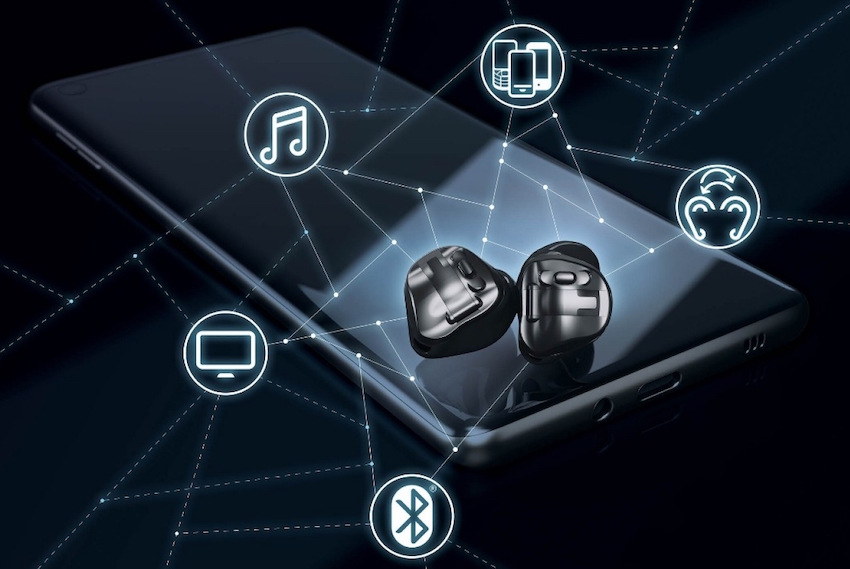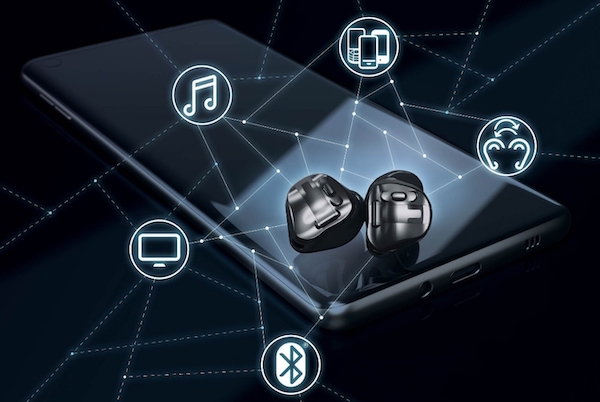Four Major Hearables Takeaways from CES 2020

As the next decade of tech innovation kicked off this week at CES in Las Vegas, it may have been easy to miss four significant hearables announcements that should propel the product category to further market penetration and usage.
While Apple has burst out of the gates and commands an early lead with its trio of hearables, the overall quality of rival offerings is steadily rising. In addition, improvements in underlying or peripheral industries are facilitating new use cases not previously available, allowing for further deviation and specialization away from AirPods’ mass-market appeal.
1. Bluetooth Takes a Big Leap Forward
Perhaps the biggest hearables development coming from CES was the release of Bluetooth LE Audio. This upgrade to the wireless technology tethering the phone to the ear-worn device, allows for less power consumption, better audio, and opens the door to brand new capabilities.
New capabilities include being able to share one audio source with multiple devices and stream audio together with virtually no latency. Applications of this are boundless, from streaming one tablet to three pairs of hearables, to an amphitheater providing Bluetooth streaming to hundreds of connected hearing aids.
One can imagine teenagers running wild with the ability to share audio seamlessly between themselves, further opening the door for audio to become more social. This also enables shared audio-AR, where the GPS of the device is the determining factor as to which audio source to stream, which could be particularly useful for activities such as tours and games.
Another big addition this update provides is the ability to mix voice and music simultaneously, allowing for communication to a voice assistant without having to interrupt media. In light of Amazon’s ExxonMobile partnership, allowing for drivers to fill their car up and pay with Amazon Pay via Alexa, it would seem that we may soon be paying for an increasing number of things through Alexa. So, the ability to issue voice transactions without interrupting the media that’s being streamed is one small, yet potentially reoccurring, example of how this development might come in handy.
2. Guardians of Health
Sensor technology took a sizable step forward as well, further enhancing hearables’ capacity for serving as, “Guardians of our Health,” as Apple has described it. For example, biometric sensor manufacturer, Valencell, announced that its photoplethysmogram (PPG) sensors are now capable of assessing a user’s blood pressure.
The ability to assess this new metric stems from improvements in recent machine learning techniques and advancements. While the same amount of data is being captured as before, it’s the ways in which that data is being analyzed that’s changing and improving enough to accurately and consistently measure new vitals from the data, such as blood pressure.
According to Valencell, “the technology can recognize hypertension with 89% accuracy, which is more accurate than comparable technologies available today, and provides [blood pressure] readings within +/-8mmHg for qualified datasets.” It would be immensely beneficial to actively and accurately monitor hypertension via a consumer wearable for the billion people living with high blood pressure globally, especially for the third of which who are oblivious to the fact that they have high blood pressure.
As Ryan Kraudel, Valencell VP of Marketing, and I discussed on a recent podcast episode, we might soon see some really creative combinations of voice assistants accessing these growing sets of biometric data to provide intelligent insights for each user. Obviously, user trust and data privacy would be of utmost importance, but we may well see our voice assistants slowly play the role of a personal trainer, nutritionist, health coach, or nurse. Circling back to Bluetooth LE Audio, it might prove useful to take advantage of mixing audio and voice in scenarios when voice assistants assume these roles, such as issuing insight about one’s biodata while working out, without interrupting the user’s media.
3. ANC Everywhere
While Active-Noise-Cancellation (ANC) exists today in many wireless offerings and is included with AirPods Pro, it’s a feature that is well on its way toward becoming standardized. The reason stems from the innovation happening with the low-power chipsets being embedded into hearables today that come with built-in support for noise cancellation. For example, Qualcomm’s QCC5100 chip series introduced at CES two years ago is now becoming realized in the market today with many of the hearable devices debuting at this year’s show featuring ANC via the QC51000 chip powering the device.
4. Multiple Form-Factors and Multiple Core Use Cases
One of the byproducts of the mass proliferation of hearables and the growing number of capabilities is that it will be increasingly difficult to discern why people are wearing their devices and what core functions each device excels at. For example, Phonak’s Virto Black looks like a consumer electronics hearable, even though it performs like a hearing aid.
The blurring of lines between form factors and core-function specialization could be a huge contributor to combat the negative stigma that has historically surrounded hearing aids in particular. As we’re seeing already with AirPods and other true wireless devices, people are opting to wear these multi-functional hearables for longer periods of time, making it borderline impossible to determine why someone is wearing their device at a glance.
Given that untreated hearing loss is such a growing issue, the idea that people can sort-of invisibly augment their hearing while accessing many of the mass-market features in non-amplification devices seems like one of the best candidates to truly make a dent in getting people who have traditionally been reluctant to treat their hearing loss sooner.
Hearables Heat Up
As Bret Kinsella, Andy Bellavia and I discussed during Voicebot podcast episode 127, battery life is paramount with small devices such as hearables and new applications often lead to increases in battery drain. Efficiencies gained with the new Bluetooth wireless protocol, should help to offset these exciting new applications, and keep consumer expectations and satisfaction levels high.
This year’s show saw the entrance of new form factors like Sentien’s bone conduction device that might change the perception of what a hearable can look like, while long-time incumbents, such as Nuheara, continue to double-down on differentiation-by-specialization with their IQbuds2 MAX. What continues to become clear from recent CES shows, along with many of the major tech platform’s own recent product reveals, is that the ear is one of the hottest commodities in tech and the hearables era is quickly upon us.
Apple’s New AirPods Pro Offer Hands-Free Siri and Active Noise Cancelation at a Premium Price
IDC Says Hearables Are Now Biggest Wearables Segment and Growing Fast
Hearables and Voice with Dave Kemp and Andy Bellavia – Voicebot Podcast Ep 127









